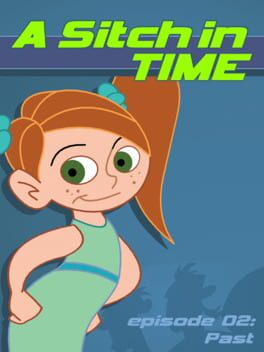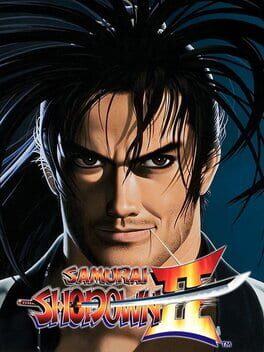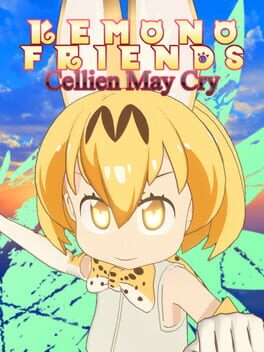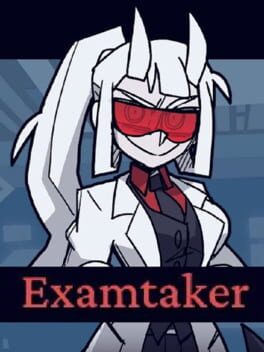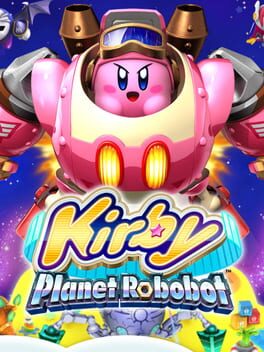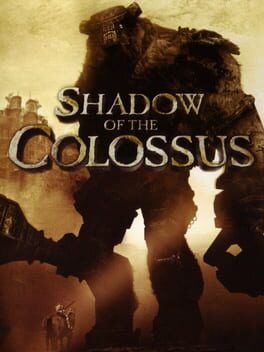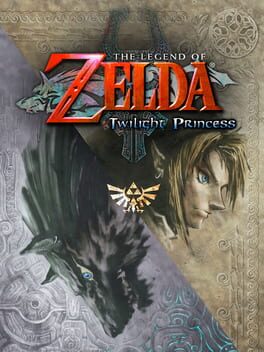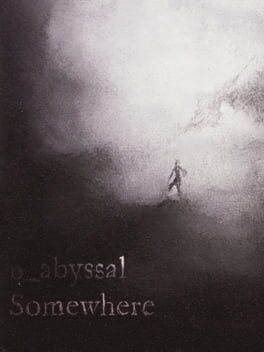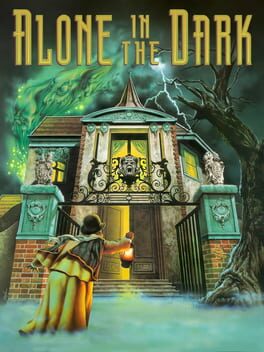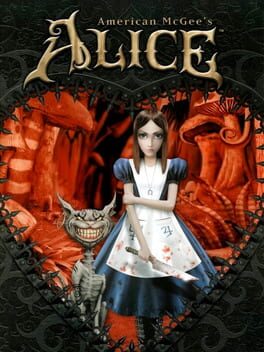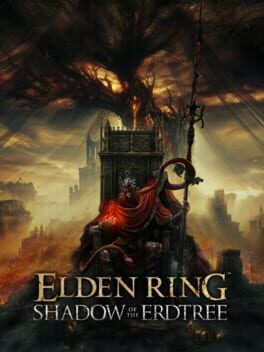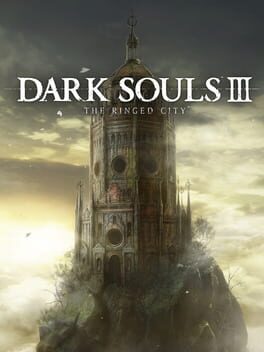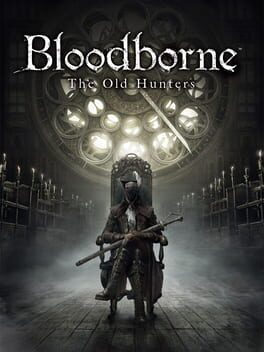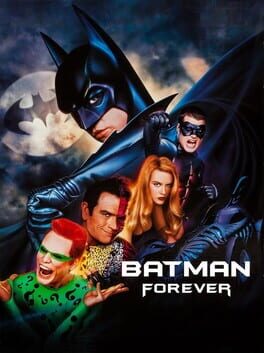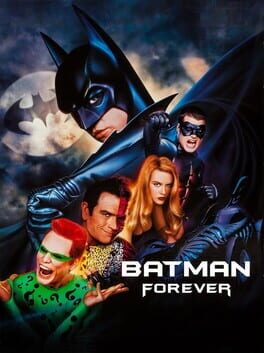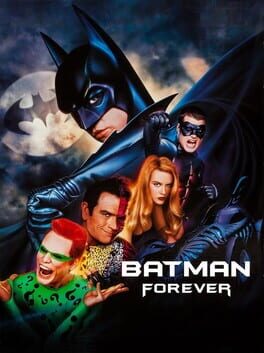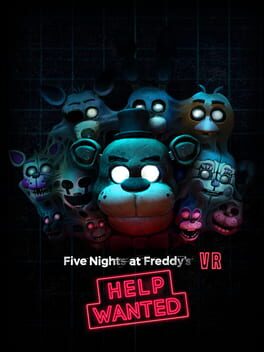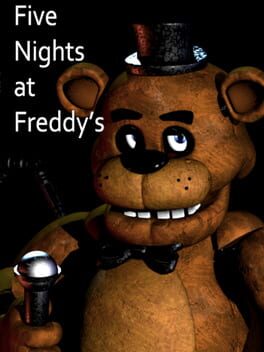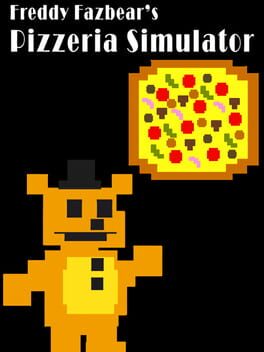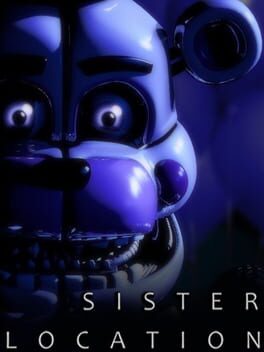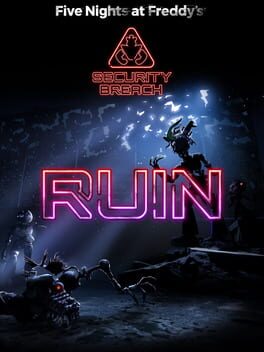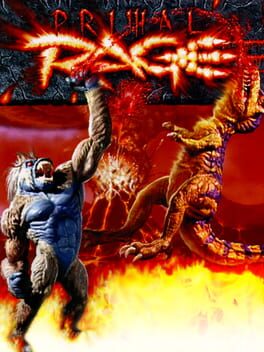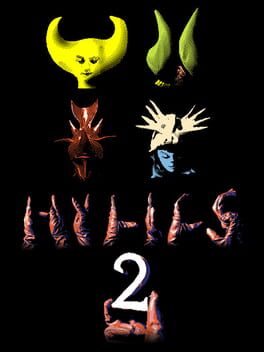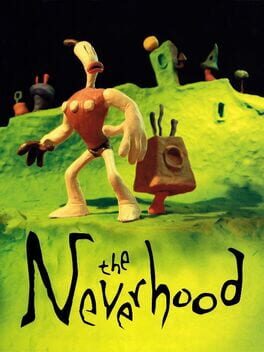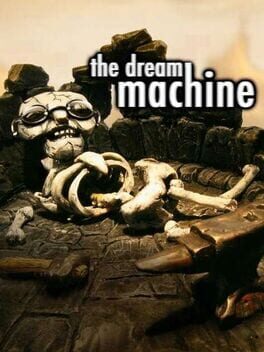This_IS_Also_Bll
2427 reviews liked by This_IS_Also_Bll
Ocarina of Time was my first game in the Zelda franchise. Not this version tho, Ocarina of Time 3D. I won't get into the details with that version, but I very much enjoyed it and wanted to play other games in the series. The same year, or the year after, my one uncle gave me his N64. I'm pretty sure there was only two games that came with it. Star Wars: Episode 1 - Racer and this game. Barely touched Star Wars at but OOT, well I already really enjoyed the 3D remake so I was excited to actually give the original a try. I loved it. At least I'm assuming I did, for some reason I replayed this version so many times back in the day..it became my most replayed game ever for a while. I memorized the entire game, every major bombable hole location, every gold skulltula. I don't know why I played this game so much but I think I ended up overplaying it to the point I started not loving it as much. With this Zelda marathon, I was able to replay this once again after not replaying it in like 10 years. Even now, I still felt some of those overplayed woes I had back then, but mostly in the early game. Even now, 90% of the collectables came right back to me. Even now, it was still fun playing this game and I still love it for getting me into Zelda and into other Nintendo games in general. This game is not perfect, and I do have some criticisms for sure, but this is an important game in regard to the history of gaming and an important game to me.
One of the best aspects of this game is its story and world-building in comparison to past games. The main plot is actually pretty similar to ALTTP. You are tasked with collecting 3 Spiritual Stones (pendants), have to obtain the Master Sword in the Temple of Time (the Lost Woods) and then you must awaken the seven sages (seven maidens) so you can destroy the barrier in Ganondorf's castle and defeat him. Very similar to ALTTP, except instead of traveling between the Light and Dark world, you must travel between the present and future. See, you actually start as young link but when you obtain the Master Sword, Link is sealed in it for seven years and becomes an adult. In terms of the story, this is much more interesting than the light and dark world was. The world changes around you as you travel to the future, and so do the characters. Speaking of them, this game is chalk full of em and they're way more interesting this time around. Link himself has way more personality than he ever did in past games. I still definitely prefer future iterations of him but he's solid here. Zelda is MUCH better here and actually plays a big part in the story. She has way more scenes and due to that and her Shiek persona, she's absolutely one of the best if not the best character in the game. Ganondorf is actually seen with his non-pig design here and there's a reason this game made his human form iconic. The sages, unlike the unnamed maidens, are actual characters here. Not just throughout their temples, you meet pretty much all of them as young Link throughout Hyrule and you help them out along the way. This helps in making them memorable and let me tell you they very much are. Whether it's your childhood friend Saria to the rough and tough Goron Darunia, they're all pretty different characters and again are actually characters this time around. The little side characters you meet in each location are memorable to as the dialogue they are given is translated much better. ALTTP I found to a decently plain and straight-forward English translation. Here tho, they like to be quirky and make a lot of the side characters say weird and interesting things which helps the world feel alive. Something else that makes the game feel alive is the many races that are found in this world. ALTTP had Hylians and Zora. Not only does OOT have those (and they're more fleshed out) it added Kokiri, Shiekah, Gerudo, Deku, and Goron's. All of these helps add to the world-building immensely. Something that would make the dialogue better in this version of the game is if you could skip to the end of single textboxes. You either have to read each one slowly or if you try to make it go faster, it skips to the very end of a set of textboxes. Majora's Mask fixed this and so did the 3DS remake, but I thought it was worth pointing out here because it can be a tad bit irksome.
The combat in this game is very different from ALTTP, simply because it's 3D now instead of 2D. This game introduces Z-Targeting. When you hold the Z button in front of an enemy, you will automatically target and face their direction the entire time. This is incredibly helpful and is almost needed with a game like this. Because this game is in 3D, this changes Link's moveset dramatically. You still swing your sword but now depending on your button inputs, you'll do different swings. You can do a vertical, horizontal swing and a jab. If you z target, have your sword out and press the a button, you do a jump attack. You can backflips, you can do side jumps. Link now auto-jumps whenever you go off a platform or a ledge. Just your basic move set is fun and imo more fun than 2D Zelda. This isn't even getting into other items like the hook-shot which had an amazing transition into 3D. That and the bow puts you into first person and it just works marvelously. The slingshot and boomerang puts you into like a over the shoulder third person view. Funnily enough, each set of items I mentioned are exclusive to each form of Link. Young Link can only use certain items and vice versa for Adult Link. Along with the enemies being more fun and interesting in a 3D environment, the combat in this game was improved from past games and it's honestly amazing for a game from 1998 and amazing for Zelda's first foray into 3D.
The overworld honestly is not the best, I think. It was their first 3D game, I'll cut them some slack but I don't care for Hyrule Field. The size was most certainly impressive back in the day, however now I just see it as wasted potential. It's pretty empty, not very interesting to look at and it's "secrets" are lame. Basically any secrets it has are holes under boulders or completely invisible holes you bomb to unlock. You can find these with the stone of agony but you need a rumble pak to even use it. Otherwise, you either have to randomly guess where they are like Zelda 1 or memorize where they, are after looking them up, on future playthroughs like I did. Wouldn't be much of an issue if some of them didn't have important stuff like gold skulltulas or a heart piece. Outside of that, you have a tedious big poe quest and a single NPC that's used in quest. Honestly if the secrets were just a little better, it was more visually appealing and there were a couple more NPC's, this main overworld, that's connected to every area, would be so much better to me. Honestly I feel like Majora's Mask fixed this issue with Termina Field, which is way better imo, but as it stands this is my least favorite part of the game imo. The area's connected to Hyrule Field are good however, Visually distinct and they have plenty of actually good secrets and collectables to find. However, actual side quests in this game aren't too great imo. The Biggoron one is memorable, but all the others aren't too great imo and are very much overshadowed by Majora Mask's fantastic side quests. Like there's literally a mask side quest where you have to obtain masks and sell them to NPC's. The reward isn't great, another mask, and it just reminds me of how MM handled its mask items way better. Tho alas, I should not be comparing it to a future game like that so I will stop.
My least favorite part of them game, besides Hyrule field, is young Link's portion. Don't get me wrong, it's not bad but the dungeons you go through don't compare to Adult Link's Temples. The Great Deku tree is a solid starting dungeon but it's also very simple. Same with Dodongo's Cavern and Jabu-Jabu's Belly. None of them are bad, they're just very simple compared to temples. Something that is great tho, and this applies to every dungeon in the game, is how visually distinct and memorable they are. 2D Zelda dungeons are great and all but they just don't compare to 3D ones. The type of stuff you can do in 3D dungeons can't be replicated in 2D ones. Jumping from the top of a tree and feeling the full depth of your fall as you land on a spider-web and bust through it due to gravity. Just can't work in 2D. I can see why people might prefer 2D ones tho. As long as they're well designed, they're usually more complicated and technically better "dungeons" where its easy to get lost. However, they lack the spectacle that I prefer in 3D ones. The first 3 young Link dungeons are very linear for example. They have puzzles ofc but it's hard to get lost in them unlike 2D ones. However, I don't mind that (tho in these first 3 dungeons case I guess I do cuz they're a bit TOO simple) and that's proven by the five temples in this game. Adult Link temples, while still probably more linear than some 2D Zelda dungeons, rock my socks. I'll just get into this now, Water temple is not bad. It was my least favorite temple this playthrough, but it's not bad..just can be a little tedious. It's the most complex and backtracky dungeon in the game, and feels kinda like a 2D dungeon but that's at the cost of being a little more tedious than the others (not only due to the design of the place but the iron boots ofc). It can be tough to figure out but I can apprecauet that. Fire temple is also good but just doesn't stick out as much as the other three. Shadow has a very disturbing atmosphere and relies on tricks and traps. Forest and Spirit temple are easily the best dungeons in the game. Forest is very atmospheric and is a very nicely designed dungeon with a great temple theme. Spirit temple is the only one to make use of both young and adult Link, and it does it well, as well as having the best dungeon boss in the game. Not every dungeon in this game is like amazing, but when it hits..IT HITS. Oh also the dungeon bosses vary in quality. Twinrova is the best boss in the game I think. She makes great use of the mirror shield and the witch sisters have actual dialogue and are actual characters that make the boss that much better. Phantom Ganon is cool as well and Ganondorf/Ganon himself is ofc badass. There are some weaker bosses like King Dodongo being piss easy or Morpha being very easy to cheese, however even these weaker bosses are cool to see now that the games in 3D.
Quick thing on the visuals. They don't look bad but they can be a bit ugly at times. Obviously, this is a game from 1998, so I can let it slide somewhat. I played on an actual N64 so the resolution and framerate are pretty bad. They had to be to even run this game at the time, so with knowledge of that and how the game looks its impressive. Still, I know I'd say I wouldn't compare it to Majora's Mask again...but that game is on the same system and looks way more vibrant to me. I know it's using the expansion pass but still..
The soundtrack is absolutely iconic. ALTTP is where Zelda's Lullaby originated, howevrr this version is way more iconic to me. Same with Kakariko Village tho I honestly might like ALTTP's version of it hehe. As for original songs, Lost Woods, Song of Storms, Gerudo Valley, Lon Lon Ranch are all bangers and are super duper iconic for good reasons. The Ocarina songs are all really good, and I actually like how the Ocarina plays a much bigger part in this game compared to the last two games it was in. My absolute favorite song in the game funnily enough, is Requiem of Spirit. Always has been, always will be. Something about it is kinda eerie yet mysterious. It's such a short song yet it's my favorite, idk why lol.
I was honestly very conflicted while playing this. Due to my complaints with Hyrule field/sidequests and me overplaying this game back in the day, part of me wanted to keep this at an 8. However, this game really was important in expanding my taste in games and is just an important landmark of a game in general. What really pushed me to bump it to a 9 though, was the ending. I've already seen it before, but I teared up. Not just teared up, I actually started to cry a bit. I don't know if it's just because the ending is very sweet and emotional, or because it reminded me the days I'd used to play this game a ton (insert anology of how I longed for my days of being a child just like Adult Link does at the end of the game or something idk). Either way, yeah I'll bump it to a 9. Game's not perfect but it is awesome, that's all that needs to be said.
I'm going to play Katamari Damacy after this and then move on to my personal favorite Zelda, Majora's Mask. Look forward to those reviews in the near future!
One of the best aspects of this game is its story and world-building in comparison to past games. The main plot is actually pretty similar to ALTTP. You are tasked with collecting 3 Spiritual Stones (pendants), have to obtain the Master Sword in the Temple of Time (the Lost Woods) and then you must awaken the seven sages (seven maidens) so you can destroy the barrier in Ganondorf's castle and defeat him. Very similar to ALTTP, except instead of traveling between the Light and Dark world, you must travel between the present and future. See, you actually start as young link but when you obtain the Master Sword, Link is sealed in it for seven years and becomes an adult. In terms of the story, this is much more interesting than the light and dark world was. The world changes around you as you travel to the future, and so do the characters. Speaking of them, this game is chalk full of em and they're way more interesting this time around. Link himself has way more personality than he ever did in past games. I still definitely prefer future iterations of him but he's solid here. Zelda is MUCH better here and actually plays a big part in the story. She has way more scenes and due to that and her Shiek persona, she's absolutely one of the best if not the best character in the game. Ganondorf is actually seen with his non-pig design here and there's a reason this game made his human form iconic. The sages, unlike the unnamed maidens, are actual characters here. Not just throughout their temples, you meet pretty much all of them as young Link throughout Hyrule and you help them out along the way. This helps in making them memorable and let me tell you they very much are. Whether it's your childhood friend Saria to the rough and tough Goron Darunia, they're all pretty different characters and again are actually characters this time around. The little side characters you meet in each location are memorable to as the dialogue they are given is translated much better. ALTTP I found to a decently plain and straight-forward English translation. Here tho, they like to be quirky and make a lot of the side characters say weird and interesting things which helps the world feel alive. Something else that makes the game feel alive is the many races that are found in this world. ALTTP had Hylians and Zora. Not only does OOT have those (and they're more fleshed out) it added Kokiri, Shiekah, Gerudo, Deku, and Goron's. All of these helps add to the world-building immensely. Something that would make the dialogue better in this version of the game is if you could skip to the end of single textboxes. You either have to read each one slowly or if you try to make it go faster, it skips to the very end of a set of textboxes. Majora's Mask fixed this and so did the 3DS remake, but I thought it was worth pointing out here because it can be a tad bit irksome.
The combat in this game is very different from ALTTP, simply because it's 3D now instead of 2D. This game introduces Z-Targeting. When you hold the Z button in front of an enemy, you will automatically target and face their direction the entire time. This is incredibly helpful and is almost needed with a game like this. Because this game is in 3D, this changes Link's moveset dramatically. You still swing your sword but now depending on your button inputs, you'll do different swings. You can do a vertical, horizontal swing and a jab. If you z target, have your sword out and press the a button, you do a jump attack. You can backflips, you can do side jumps. Link now auto-jumps whenever you go off a platform or a ledge. Just your basic move set is fun and imo more fun than 2D Zelda. This isn't even getting into other items like the hook-shot which had an amazing transition into 3D. That and the bow puts you into first person and it just works marvelously. The slingshot and boomerang puts you into like a over the shoulder third person view. Funnily enough, each set of items I mentioned are exclusive to each form of Link. Young Link can only use certain items and vice versa for Adult Link. Along with the enemies being more fun and interesting in a 3D environment, the combat in this game was improved from past games and it's honestly amazing for a game from 1998 and amazing for Zelda's first foray into 3D.
The overworld honestly is not the best, I think. It was their first 3D game, I'll cut them some slack but I don't care for Hyrule Field. The size was most certainly impressive back in the day, however now I just see it as wasted potential. It's pretty empty, not very interesting to look at and it's "secrets" are lame. Basically any secrets it has are holes under boulders or completely invisible holes you bomb to unlock. You can find these with the stone of agony but you need a rumble pak to even use it. Otherwise, you either have to randomly guess where they are like Zelda 1 or memorize where they, are after looking them up, on future playthroughs like I did. Wouldn't be much of an issue if some of them didn't have important stuff like gold skulltulas or a heart piece. Outside of that, you have a tedious big poe quest and a single NPC that's used in quest. Honestly if the secrets were just a little better, it was more visually appealing and there were a couple more NPC's, this main overworld, that's connected to every area, would be so much better to me. Honestly I feel like Majora's Mask fixed this issue with Termina Field, which is way better imo, but as it stands this is my least favorite part of the game imo. The area's connected to Hyrule Field are good however, Visually distinct and they have plenty of actually good secrets and collectables to find. However, actual side quests in this game aren't too great imo. The Biggoron one is memorable, but all the others aren't too great imo and are very much overshadowed by Majora Mask's fantastic side quests. Like there's literally a mask side quest where you have to obtain masks and sell them to NPC's. The reward isn't great, another mask, and it just reminds me of how MM handled its mask items way better. Tho alas, I should not be comparing it to a future game like that so I will stop.
My least favorite part of them game, besides Hyrule field, is young Link's portion. Don't get me wrong, it's not bad but the dungeons you go through don't compare to Adult Link's Temples. The Great Deku tree is a solid starting dungeon but it's also very simple. Same with Dodongo's Cavern and Jabu-Jabu's Belly. None of them are bad, they're just very simple compared to temples. Something that is great tho, and this applies to every dungeon in the game, is how visually distinct and memorable they are. 2D Zelda dungeons are great and all but they just don't compare to 3D ones. The type of stuff you can do in 3D dungeons can't be replicated in 2D ones. Jumping from the top of a tree and feeling the full depth of your fall as you land on a spider-web and bust through it due to gravity. Just can't work in 2D. I can see why people might prefer 2D ones tho. As long as they're well designed, they're usually more complicated and technically better "dungeons" where its easy to get lost. However, they lack the spectacle that I prefer in 3D ones. The first 3 young Link dungeons are very linear for example. They have puzzles ofc but it's hard to get lost in them unlike 2D ones. However, I don't mind that (tho in these first 3 dungeons case I guess I do cuz they're a bit TOO simple) and that's proven by the five temples in this game. Adult Link temples, while still probably more linear than some 2D Zelda dungeons, rock my socks. I'll just get into this now, Water temple is not bad. It was my least favorite temple this playthrough, but it's not bad..just can be a little tedious. It's the most complex and backtracky dungeon in the game, and feels kinda like a 2D dungeon but that's at the cost of being a little more tedious than the others (not only due to the design of the place but the iron boots ofc). It can be tough to figure out but I can apprecauet that. Fire temple is also good but just doesn't stick out as much as the other three. Shadow has a very disturbing atmosphere and relies on tricks and traps. Forest and Spirit temple are easily the best dungeons in the game. Forest is very atmospheric and is a very nicely designed dungeon with a great temple theme. Spirit temple is the only one to make use of both young and adult Link, and it does it well, as well as having the best dungeon boss in the game. Not every dungeon in this game is like amazing, but when it hits..IT HITS. Oh also the dungeon bosses vary in quality. Twinrova is the best boss in the game I think. She makes great use of the mirror shield and the witch sisters have actual dialogue and are actual characters that make the boss that much better. Phantom Ganon is cool as well and Ganondorf/Ganon himself is ofc badass. There are some weaker bosses like King Dodongo being piss easy or Morpha being very easy to cheese, however even these weaker bosses are cool to see now that the games in 3D.
Quick thing on the visuals. They don't look bad but they can be a bit ugly at times. Obviously, this is a game from 1998, so I can let it slide somewhat. I played on an actual N64 so the resolution and framerate are pretty bad. They had to be to even run this game at the time, so with knowledge of that and how the game looks its impressive. Still, I know I'd say I wouldn't compare it to Majora's Mask again...but that game is on the same system and looks way more vibrant to me. I know it's using the expansion pass but still..
The soundtrack is absolutely iconic. ALTTP is where Zelda's Lullaby originated, howevrr this version is way more iconic to me. Same with Kakariko Village tho I honestly might like ALTTP's version of it hehe. As for original songs, Lost Woods, Song of Storms, Gerudo Valley, Lon Lon Ranch are all bangers and are super duper iconic for good reasons. The Ocarina songs are all really good, and I actually like how the Ocarina plays a much bigger part in this game compared to the last two games it was in. My absolute favorite song in the game funnily enough, is Requiem of Spirit. Always has been, always will be. Something about it is kinda eerie yet mysterious. It's such a short song yet it's my favorite, idk why lol.
I was honestly very conflicted while playing this. Due to my complaints with Hyrule field/sidequests and me overplaying this game back in the day, part of me wanted to keep this at an 8. However, this game really was important in expanding my taste in games and is just an important landmark of a game in general. What really pushed me to bump it to a 9 though, was the ending. I've already seen it before, but I teared up. Not just teared up, I actually started to cry a bit. I don't know if it's just because the ending is very sweet and emotional, or because it reminded me the days I'd used to play this game a ton (insert anology of how I longed for my days of being a child just like Adult Link does at the end of the game or something idk). Either way, yeah I'll bump it to a 9. Game's not perfect but it is awesome, that's all that needs to be said.
I'm going to play Katamari Damacy after this and then move on to my personal favorite Zelda, Majora's Mask. Look forward to those reviews in the near future!
Doom
1993
Classic Doom was something I was really big into back in 2022, as well as last year. Prior to that, I had only played a bit of the reboot, but it wasn't until this game where I became addicted to the series. Shortly after I beat the first Doom, I played Doom II and a bunch of WADs. By then, I was a massive fan, but I had played so much Doom, I got burnt out. It's been about a year since I played anything Doom, and a year and a half since I played the original, and even with Doom II adding a lot of cool shit, it's undeniable the original is still a classic and is still amazing to this day.
"Story in a game is like a story in a porn movie. It's expected to be there, but it's not that important." This is a quote from John Carmack, the lead programmer of Doom and other Id Software games, and obviously what he said is not true. Some games are greatly enhanced by having an amazing narrative; however, Doom is a case where it's forefront is entirely on the gameplay. Sure, there is an explanation for what's taking place in game. You are Doomguy. You're a space marine and your job is to kill demons that have invaded Mars. While there may be more to it in the manual of the game, that's all you need to know which fits Doom perfectly. There are textboxes in between episodes that advance the story more, but it's mostly there to pump you up to kill more demons.
As one of the first FPS games ever, Doom is way simpler compared to modern games. If you're used to those types of games, you'd be confused to find out you can't aim your weapons up and down in this game. This is because your shots can hit enemies above or below you, due to limitations at the time. This may be weird for modern gamers at first, however as someone that sucks at FPS games, it's a blessing and is a reason I really love classic Doom. Something else I loved when I first played is Doomguy's movement. You can hold a button to run, and it feels so good weaving between demons and going back and forth through levels.
You are provided a variety of different weapons throughout the game. The shotgun being your best friend for the majority of the game, though the rest of the weapons have their uses as well. The pistol is fine early on but is not worth using at all once you have gotten every other weapon in a level. The chain gun is good for weaker enemies as well as stun locking other ones. The rocket launcher can damage you if you're too close to a demon or hit a wall but is extremely powerful to compensate. The chainsaw is great for close-ranged demons and so is the berserk power-up which lets you punch demons (which you can normally do) harder than normal. It's inconsistent though with its damage which kinda stinks. The plasma gun just burns through demons with the downside being the ammo is usually pretty rare. And the BFG, well that's just the best weapon in the game due to how powerful it is and how it hits every enemy on screen. Each weapon has its uses in different scenarios based on what demon you're fighting.
Speaking of the demons, they're obviously your main adversaries in this game. The weakest enemies, the zombie man and the shotgunner, are both hit scan. Both enemies can actually be annoying when in large groups but otherwise they're easy to take out. Imps are the most common demon in the game, and they throw fast projectile fireballs at you. Pinky's have no projectiles and can only attack you when they're right in front of you. Spectre's are the exact same as the Pinky except they're invisible. Lost Soul's are flying flaming skulls and they're pretty much the most obnoxious enemy in the game. Cacodemons are red round flying fellas that shoot an even more powerful fireball out of their mouth. These are all the regular enemies that appear in episode 1, they're all iconic and the decent variety of demons make the game more engaging. The first boss in the game, the Baron of hell, is a tall beefy demon that throws fast fireballs at you. The boss consists of a set of them and once you defeat them, they start appearing as regular enemies in levels. In fact, the other two bosses appear in regular levels as well (if you're playing WAD's at least for Spider Mastermind's case). The cyberdemon has the most health out of any demon and shoots three rockets at once at you. It's easily the most dangerous demon in the game and you will shit your pants whenever you hear him in WAD's. Spider Mastermind isn't as hard. It has less health and is a hit scan demon. Actually, going into the boss battles though, the Barons of Hell are solid if not a little easy. The cyberdemon is a lot of fun and the game provides the player with plenty of ammo in that level. However, the spider mastermind fight is legit the one thing I don't like about this game. They barely give you any ammo, and there isn't much to protect you from the hit scan so you either struggle to defeat it which isn't fun with a fight like that since you have to dodge in and out of the middle area, or you destroy it with a BFG blast or something. It's the biggest blemish this game has but doesn't bring the game down really.
The game is split into three episodes and the levels vary in quality. Episode 1, Knee-Deep in the Dead, is generally considered to be the best and most well-designed episode. The levels are indeed very well designed and are more densely packed compared to the other two episodes. However, I do wish the visuals were a little more interesting, I know it's the starting episode and the game hasn't gotten crazy yet, however the levels kinda blend together a bit for me despite every single one being really good. The game has bonus exits, one per episode, that lead to bonus levels and episode 1 actually has my favorite of the bunch, I think. Episode 2, The Shores of Hell, is also very well designed like episode 1 was. I do find these levels to be more memorable tho tbh. Their layouts are more varied and so are the visuals which are starting to be more demonic in nature. The secret level here is probably the weakest of the bunch, due to it mostly showing off the infighting mechanic (a mechanic where if demons projectiles or moves hit another demon, they start fighting) but I still find it fun. Episode 3, Inferno, is still good but it's definitely the most mixed of all three episodes. While I really love the visuals, by this time Doomguy is transported to Hell, it has the aforementioned spider mastermind fight. Besides that, there are two levels near the end of the episodes that are pretty mazey and just aren't tightly designed like the rest of the game is. I do think it makes up for it with Mt Erebus, a very open map that is more akin to something from Doom 2. As well as that, the bonus level is a nice fake out as it starts as the first level of episode 3 but once you get to the exit, it's not an exit at all and you encounter a cyberdemon. It's a crazy surprise and just a neat concept in general. Overall, these episodes are all full of well-designed levels, even if there's a couple that can be a little iffy.
Visually, this game is incredibly impressive for a game from 1993. This game is actually all 2D, but it was made to look 3D and it looks wonderful. Obviously, it depends on the level's visuals, but they all generally look good. Something I love about classic Doom tho is the liminal feel it gives me. It's mostly outside when you can see the different skyboxes, which is why Doom II hits harder on that front, but whenever this game does it, it's awesome. The sound effects are also all great. I think they're mostly all from a public audio library, so you might hear the same sounds in other pieces of media. Some are tweaked here, but either way they're iconic as hell.
The music is also a highlight of this game. There's a lot of rock and metal tracks which makes sense for a game where your goal is to slaughter demons. However, there are some more out there and atmospheric tracks which I really dig as well. At Doom's Gate is obviously iconic as hell and is peak. Sinister is a slower and more methodical piece that always reminds me of the level it plays in, the level that gave me the most trouble on my first playthrough. I Sawed the Demons is another popular one because it's badass. However, my favorite song back when I first played and even now is Hiding the Secrets. Idk man, that one just always pumps me up the most. Either way, the entire soundtrack is badass as well as really experimental which I admire a ton when it comes to soundtracks.
Yup, Doom is still a banger. It's not perfect, but it's damn close and was revolutionary as hell when it came out. I will say, I played the PS4 version yet I'm logging the original due to more people having played it. It's the same game anyways so. Also didn't play Thy Flesh Consumed because it was released later, and I don't want to go through some of those horseshit levels again. Either way, I think the original Doom is a must play for any gamer and I'm excited to replay Doom II next. After that though, expect a SMTV Vengeance review very soon after as I'm also nearing the end of that game!
"Story in a game is like a story in a porn movie. It's expected to be there, but it's not that important." This is a quote from John Carmack, the lead programmer of Doom and other Id Software games, and obviously what he said is not true. Some games are greatly enhanced by having an amazing narrative; however, Doom is a case where it's forefront is entirely on the gameplay. Sure, there is an explanation for what's taking place in game. You are Doomguy. You're a space marine and your job is to kill demons that have invaded Mars. While there may be more to it in the manual of the game, that's all you need to know which fits Doom perfectly. There are textboxes in between episodes that advance the story more, but it's mostly there to pump you up to kill more demons.
As one of the first FPS games ever, Doom is way simpler compared to modern games. If you're used to those types of games, you'd be confused to find out you can't aim your weapons up and down in this game. This is because your shots can hit enemies above or below you, due to limitations at the time. This may be weird for modern gamers at first, however as someone that sucks at FPS games, it's a blessing and is a reason I really love classic Doom. Something else I loved when I first played is Doomguy's movement. You can hold a button to run, and it feels so good weaving between demons and going back and forth through levels.
You are provided a variety of different weapons throughout the game. The shotgun being your best friend for the majority of the game, though the rest of the weapons have their uses as well. The pistol is fine early on but is not worth using at all once you have gotten every other weapon in a level. The chain gun is good for weaker enemies as well as stun locking other ones. The rocket launcher can damage you if you're too close to a demon or hit a wall but is extremely powerful to compensate. The chainsaw is great for close-ranged demons and so is the berserk power-up which lets you punch demons (which you can normally do) harder than normal. It's inconsistent though with its damage which kinda stinks. The plasma gun just burns through demons with the downside being the ammo is usually pretty rare. And the BFG, well that's just the best weapon in the game due to how powerful it is and how it hits every enemy on screen. Each weapon has its uses in different scenarios based on what demon you're fighting.
Speaking of the demons, they're obviously your main adversaries in this game. The weakest enemies, the zombie man and the shotgunner, are both hit scan. Both enemies can actually be annoying when in large groups but otherwise they're easy to take out. Imps are the most common demon in the game, and they throw fast projectile fireballs at you. Pinky's have no projectiles and can only attack you when they're right in front of you. Spectre's are the exact same as the Pinky except they're invisible. Lost Soul's are flying flaming skulls and they're pretty much the most obnoxious enemy in the game. Cacodemons are red round flying fellas that shoot an even more powerful fireball out of their mouth. These are all the regular enemies that appear in episode 1, they're all iconic and the decent variety of demons make the game more engaging. The first boss in the game, the Baron of hell, is a tall beefy demon that throws fast fireballs at you. The boss consists of a set of them and once you defeat them, they start appearing as regular enemies in levels. In fact, the other two bosses appear in regular levels as well (if you're playing WAD's at least for Spider Mastermind's case). The cyberdemon has the most health out of any demon and shoots three rockets at once at you. It's easily the most dangerous demon in the game and you will shit your pants whenever you hear him in WAD's. Spider Mastermind isn't as hard. It has less health and is a hit scan demon. Actually, going into the boss battles though, the Barons of Hell are solid if not a little easy. The cyberdemon is a lot of fun and the game provides the player with plenty of ammo in that level. However, the spider mastermind fight is legit the one thing I don't like about this game. They barely give you any ammo, and there isn't much to protect you from the hit scan so you either struggle to defeat it which isn't fun with a fight like that since you have to dodge in and out of the middle area, or you destroy it with a BFG blast or something. It's the biggest blemish this game has but doesn't bring the game down really.
The game is split into three episodes and the levels vary in quality. Episode 1, Knee-Deep in the Dead, is generally considered to be the best and most well-designed episode. The levels are indeed very well designed and are more densely packed compared to the other two episodes. However, I do wish the visuals were a little more interesting, I know it's the starting episode and the game hasn't gotten crazy yet, however the levels kinda blend together a bit for me despite every single one being really good. The game has bonus exits, one per episode, that lead to bonus levels and episode 1 actually has my favorite of the bunch, I think. Episode 2, The Shores of Hell, is also very well designed like episode 1 was. I do find these levels to be more memorable tho tbh. Their layouts are more varied and so are the visuals which are starting to be more demonic in nature. The secret level here is probably the weakest of the bunch, due to it mostly showing off the infighting mechanic (a mechanic where if demons projectiles or moves hit another demon, they start fighting) but I still find it fun. Episode 3, Inferno, is still good but it's definitely the most mixed of all three episodes. While I really love the visuals, by this time Doomguy is transported to Hell, it has the aforementioned spider mastermind fight. Besides that, there are two levels near the end of the episodes that are pretty mazey and just aren't tightly designed like the rest of the game is. I do think it makes up for it with Mt Erebus, a very open map that is more akin to something from Doom 2. As well as that, the bonus level is a nice fake out as it starts as the first level of episode 3 but once you get to the exit, it's not an exit at all and you encounter a cyberdemon. It's a crazy surprise and just a neat concept in general. Overall, these episodes are all full of well-designed levels, even if there's a couple that can be a little iffy.
Visually, this game is incredibly impressive for a game from 1993. This game is actually all 2D, but it was made to look 3D and it looks wonderful. Obviously, it depends on the level's visuals, but they all generally look good. Something I love about classic Doom tho is the liminal feel it gives me. It's mostly outside when you can see the different skyboxes, which is why Doom II hits harder on that front, but whenever this game does it, it's awesome. The sound effects are also all great. I think they're mostly all from a public audio library, so you might hear the same sounds in other pieces of media. Some are tweaked here, but either way they're iconic as hell.
The music is also a highlight of this game. There's a lot of rock and metal tracks which makes sense for a game where your goal is to slaughter demons. However, there are some more out there and atmospheric tracks which I really dig as well. At Doom's Gate is obviously iconic as hell and is peak. Sinister is a slower and more methodical piece that always reminds me of the level it plays in, the level that gave me the most trouble on my first playthrough. I Sawed the Demons is another popular one because it's badass. However, my favorite song back when I first played and even now is Hiding the Secrets. Idk man, that one just always pumps me up the most. Either way, the entire soundtrack is badass as well as really experimental which I admire a ton when it comes to soundtracks.
Yup, Doom is still a banger. It's not perfect, but it's damn close and was revolutionary as hell when it came out. I will say, I played the PS4 version yet I'm logging the original due to more people having played it. It's the same game anyways so. Also didn't play Thy Flesh Consumed because it was released later, and I don't want to go through some of those horseshit levels again. Either way, I think the original Doom is a must play for any gamer and I'm excited to replay Doom II next. After that though, expect a SMTV Vengeance review very soon after as I'm also nearing the end of that game!
Lies of P
2023
One of the best soulslikes, even better than some of the mainline FromSoft entries. It's so refreshing to see a game in this genre understand that it can provide a difficult and satisfying challenge without being needlessly obtuse, actually providing good quality of life, and in general not be so dang hostile to its playerbase. Weaponcrafting was a surprise highlight for me and I used my own assembled weapons all throughout, which is also encouraged with NG+ content providing enough incentive to go back through with all your new tools.
Lies of P
2023
Lies of P
2023
Lies of P
2023
Balatro
2024
Balatro
2024
Man, am I a sucker for snappy and responsive UI. Rarely is that pulled off well in the first place... but add in colourful and flashy bits to the mix and it is STILL quick? That's a job well done.
This is probably the second best take on roguelike deck builders so far (though it could also be Cobalt Core). There are plenty of ways to continue to challenge yourself as you "ascend" through the difficulty levels. After beating the game once with every deck and then beating gold rank (or whatever the highest one is) on one deck, I was content. I put the game down after about 60 hours of play or so.
I think something that became apparent after I understood the game well enough was that this game feels a bit too luck based to be a truly fantastic game like Slay the Spire. In StS, I always feel in control of my destiny. Here, it feels as though I can get screwed super early over and over. Not only that, but late in to a run you can just get stonewalled suddenly. The difficulty curve is very strange.
The first few antes are hard unless you get great synergy immediately. If you can get past ante 3 you're likely going to easily get to ante 7 or 8. But then.... there's a good chance you're gonna lose. It just kinda feels strange in that way.
Outside of that, I loved my time with this game! It's very satisfying learning how things work together and how to position your cards.
This is probably the second best take on roguelike deck builders so far (though it could also be Cobalt Core). There are plenty of ways to continue to challenge yourself as you "ascend" through the difficulty levels. After beating the game once with every deck and then beating gold rank (or whatever the highest one is) on one deck, I was content. I put the game down after about 60 hours of play or so.
I think something that became apparent after I understood the game well enough was that this game feels a bit too luck based to be a truly fantastic game like Slay the Spire. In StS, I always feel in control of my destiny. Here, it feels as though I can get screwed super early over and over. Not only that, but late in to a run you can just get stonewalled suddenly. The difficulty curve is very strange.
The first few antes are hard unless you get great synergy immediately. If you can get past ante 3 you're likely going to easily get to ante 7 or 8. But then.... there's a good chance you're gonna lose. It just kinda feels strange in that way.
Outside of that, I loved my time with this game! It's very satisfying learning how things work together and how to position your cards.
Balatro
2024
Balatro
2024
Balatro is a lot like Vampire Survivors; it is a turn-based rate puzzle game with random pieces wearing the skin of a colorful numbers-go-up roguelike. Balatro has a very fun, colorful, and juicy card-playing interface that mechanically takes a back-seat to choosing what to buy from the shop and focus your attention on for the game. Nothing wrong with that, of course, and Balatro's Jokers and relaxed relationship with poker allows players moments of surprised cunning when they bend the rules in new ways.
Balatro's pain point for me (in addition to its one singular presentation/mood) is how shop dependent winning is. Unlike most modern roguelikes, you cannot win a run of Balatro without the shop's permission. The lack of enforced skill-related scaling and ever-increasing chip gates means that if get off to a bad start, you will lose, regardless of mechanical skill. It's frustrating (but maybe genre-appropriate) that there is a tangible limit to how much skill can matter.
Balatro's pain point for me (in addition to its one singular presentation/mood) is how shop dependent winning is. Unlike most modern roguelikes, you cannot win a run of Balatro without the shop's permission. The lack of enforced skill-related scaling and ever-increasing chip gates means that if get off to a bad start, you will lose, regardless of mechanical skill. It's frustrating (but maybe genre-appropriate) that there is a tangible limit to how much skill can matter.




